On the morning of October 10, 1954, Hanoi was resplendent with the colors of flags and flowers, with people full of joy and emotion. From the five gates, the victorious army entered the capital amid the jubilation of tens of thousands of people.
October 10, 1954 became a historic moment, a milestone in the history of the nation, when the capital Hanoi was liberated. From the heroic capital in the resistance war to the center of innovation and creativity of the country, Hanoi has always been a living symbol of the Vietnamese spirit - resilient in combat, breakthrough in development and steadfast on the journey of integration.
Hanoi - the day of victory
After the August Revolution in 1945, the Democratic Republic of Vietnam was born, but the French colonialists returned to invade with the ambition of re-establishing the colonial regime. On December 19, 1946, the nationwide resistance war broke out, Hanoi became the place that opened the long, heroic war, holding the enemy for 60 days and nights.
Nine years later, the "resounding victory across five continents, shaking the earth" of the Dien Bien Phu Campaign (May 7, 1954) forced the French colonialists to sign the Geneva Agreement (July 21, 1954), recognizing the independence, sovereignty and territorial integrity of Vietnam, Laos and Cambodia, and withdrawing troops from the North of our country.
On the morning of October 10, 1954, Hanoi was filled with flags and flowers. From the five gates, victorious troops entered the capital amid the jubilation of tens of thousands of people.
According to the Agreement, Hanoi was located in the 80-day assembly area of the French army, the transfer period ended on October 10, 1954.
During those 80 days, the army and people of Hanoi had to continue the struggle in the new context to take over the capital. The French colonialists took advantage of this time to sabotage economic and cultural facilities, lure migrants to the South, cause chaos and bring all work to a halt. They wanted us to take over an exhausted and chaotic capital, reducing the prestige of the resistance government domestically and internationally.
Faced with that situation, the Politburo and the Central Party Secretariat directly directed the takeover work. On September 17, 1954, the Hanoi City Military Committee was established with Major General Vuong Thua Vu as Chairman and Doctor Tran Duy Hung as Vice Chairman, responsible for preparing all conditions to take over the Capital in an orderly and safe manner.
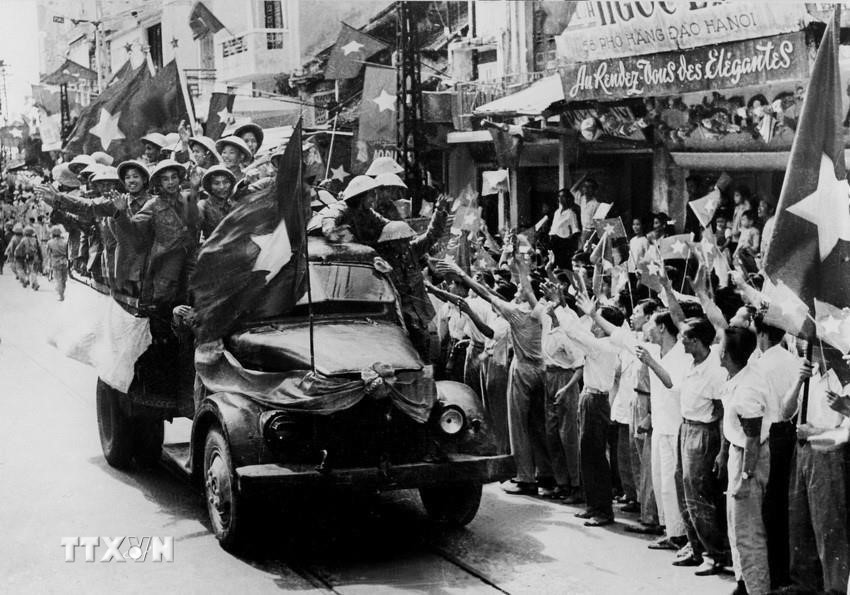
The 308th Division and the 57th Regiment of the 304th Division, along with many police units, were assigned to take over the capital. In August 1954, the Party Central Committee and the Government decided to establish the 350th Division and send it to the capital to carry out its duties.
On September 19, 1954, at Hung Temple, President Ho Chi Minh met with officers and soldiers of the 308th Division and said the immortal words: "In the past, the Hung Kings had the merit of building the country, today we, Uncle and nephew, must work together to protect the country." He emphasized, "The people of Hanoi have been waiting for you since the day you left. Now, the red flag with the yellow star is waiting and cheering for you, be worthy of that honor and responsibility."
After the struggle on the diplomatic front to demand that the French colonialists withdraw from Hanoi on time, ensuring the principle of orderly and safe transfer, without sabotage and without interrupting the activities of the people's lives, on September 30, 1954, the two sides signed the Agreement on the military transfer of Hanoi; on October 2, they signed the Agreement on the administrative transfer of Hanoi.
From October 2 to 5, 1954, our administrative and order teams entered the city first, preparing to take over agencies, offices, and public works.
On October 6, the French army began to withdraw from Van Dien and Ha Dong; on October 8, our army units participated in taking over the capital, following many routes to Hanoi, approaching the belt of De La Thanh, Nhat Tan, Cau Giay, Nga Tu So, Bach Mai and Vinh Tuy, while the French army withdrew from Yen Vien.
On the morning of October 9, 1954, our army took over four suburban districts, then gradually advanced into the inner city. In the afternoon of the same day, all French troops withdrew to the north of Long Bien bridge. At 4:30 p.m., our army completely controlled Hanoi, taking over the city safely and in order.
On the morning of October 10, 1954, Hanoi was filled with flags and flowers. From the five gates, victorious troops entered the capital amid the jubilation of tens of thousands of people. On the headquarters of the old government such as the Governor-General's Palace and the French Army General Command, the red flag with a yellow star fluttered.
The ceremony to take over the capital took place solemnly at the Cot Co stadium, with the presence of many leaders and soldiers of Hanoi. Hundreds of thousands of Hanoi people and armed forces attended the flag-raising ceremony organized by the Military and Government Committee.
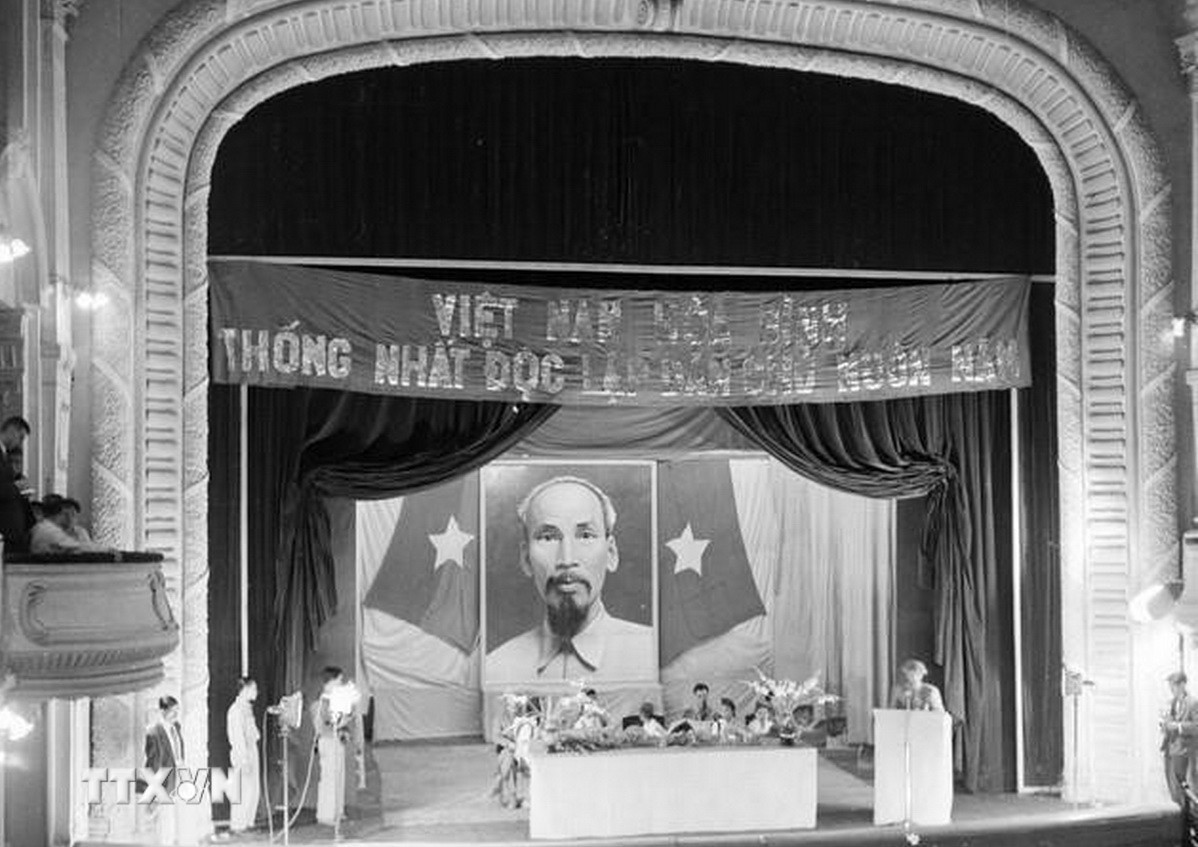
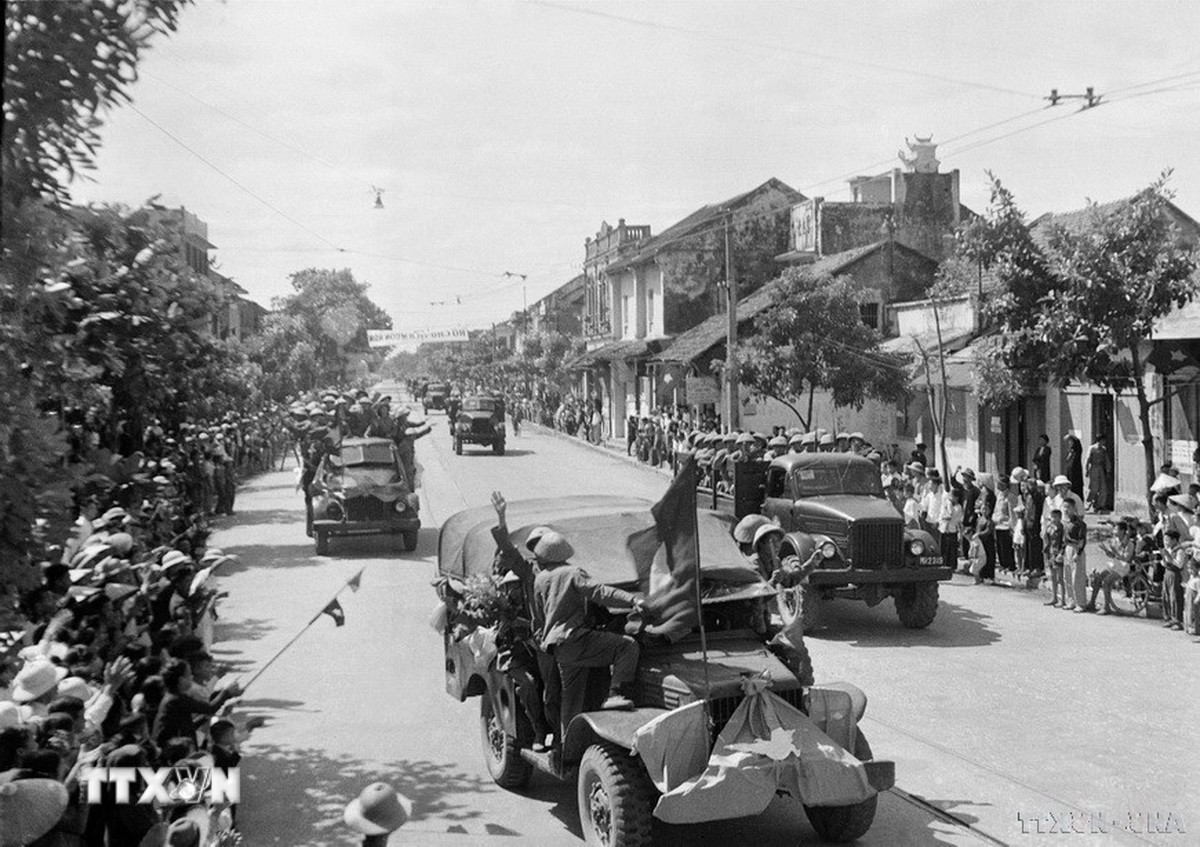
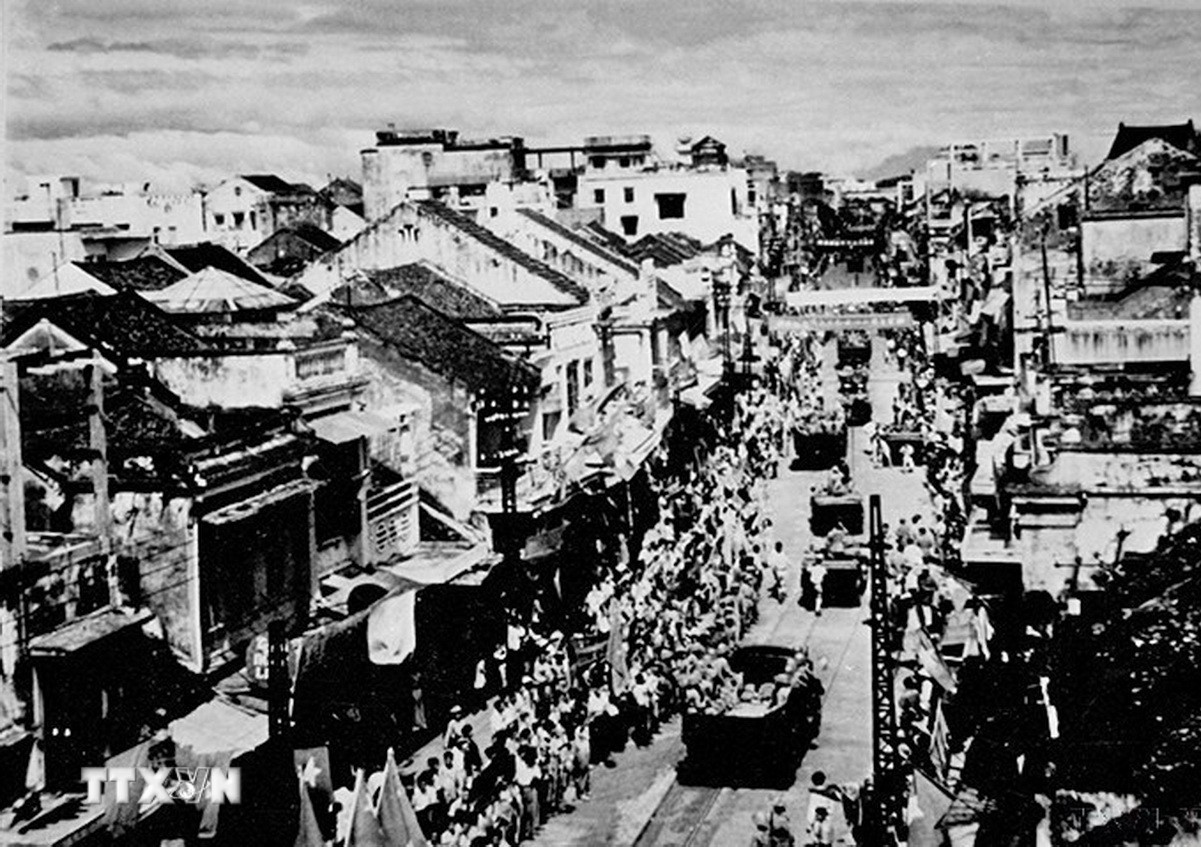
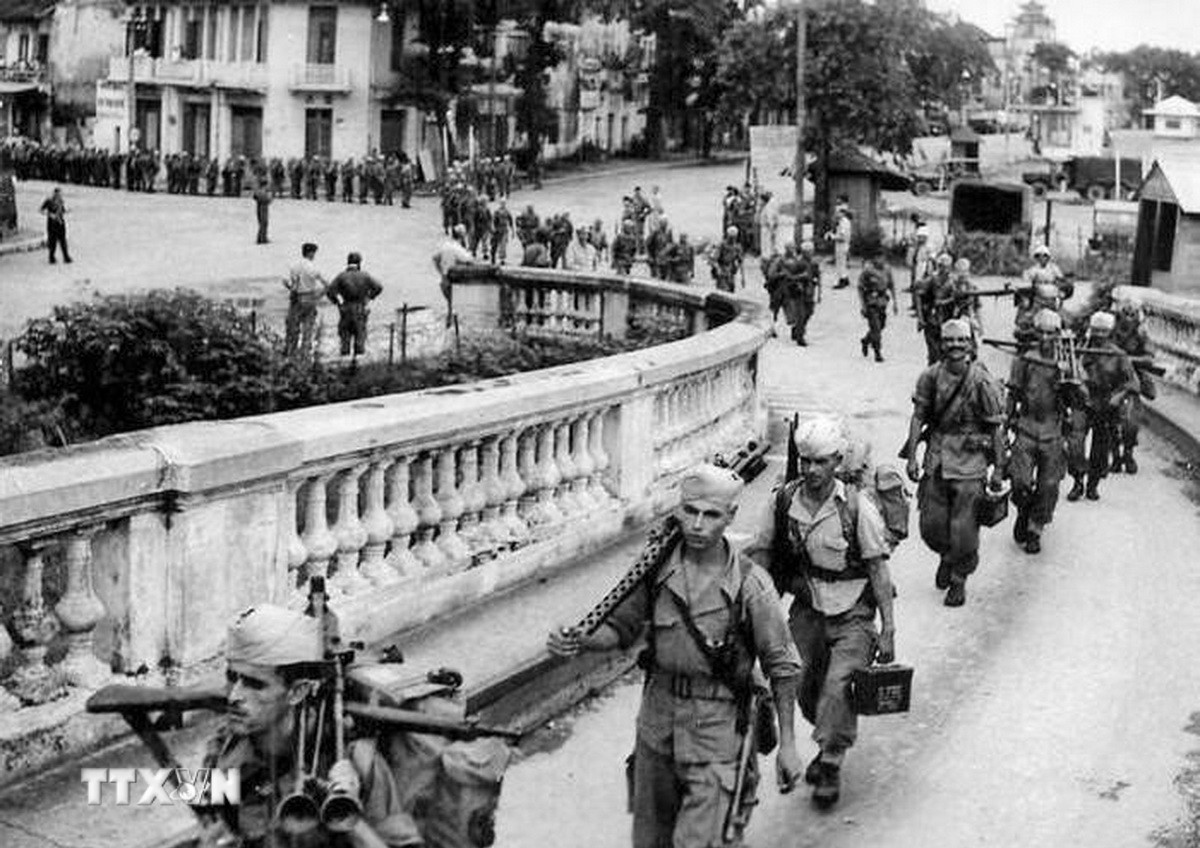
After the flag-raising ceremony, Chairman of the Military Commission Vuong Thua Vu respectfully read President Ho Chi Minh's Appeal to the people of the Capital on the occasion of Liberation Day. In the Appeal, Uncle Ho wrote: "For the past eight years, the Government has had to leave the Capital to fight for national salvation.
Although we are far apart, the Government is always close to the people. Today, thanks to the unity of our people, the heroic fighting of our army, peace has been achieved, and the Government has returned to the capital with the people. Thousands of miles away, one family, the joy is indescribable!
Uncle Ho also advised: "If the Government is determined and all the people of Hanoi are united in contributing to the Government, we will definitely overcome all difficulties and achieve the common goal: Making Hanoi a peaceful, joyful and prosperous capital."
Hanoi - development and integration
Immediately after taking over the capital, the Hanoi Party Committee and government led the people to quickly stabilize the situation and begin to restore and renovate the capital. Only one year later, Hanoi completed land reform, a fundamental strategic task of the national democratic revolution.
During the years of resistance against American imperialism, hundreds of thousands of children of the capital joined the army to fight on all battlefields. In the rear, Hanoi became a major economic center of the socialist North, supporting the front line with the motto "not a pound of rice is missing, not a soldier is missing."
From a city devastated by war, Hanoi has risen to become a modern, dynamic and deeply integrated urban area with the world. With great achievements in all fields, Hanoi is confidently entering a new stage of development, carrying with it the aspirations of the entire nation in the era of international integration.
Even more proudly, Hanoi and other localities, under the leadership of the Party, created a “Dien Bien Phu in the air” in December 1972, forcing the US imperialists to return to the negotiating table and sign the Paris Agreement, ending the war and restoring peace in Vietnam (January 27, 1973). This was an important premise for the whole country to create the Great Victory in the Spring of 1975.
After the country was reunited, Hanoi and the whole country entered a period of economic and social recovery, improving people's lives. By 1982, Hanoi had basically restored its infrastructure for economic and social development.
Since 1986, thoroughly grasping and creatively applying the Party's innovation policy, the Hanoi Party Committee has proposed a socio-economic development policy in accordance with local realities, determined to innovate the management mechanism, develop a multi-sector commodity economy, operating under a market mechanism with State management in a socialist orientation.
In particular, August 1, 2008 was a major turning point for Hanoi when the National Assembly passed Resolution No. 15/2008/QH12 expanding the administrative boundaries of the capital on the basis of merging Ha Tay province, Me Linh district (Vinh Phuc) and 4 communes of Hoa Binh.
This event created a new development space, bringing Hanoi into a comprehensive development stage, achieving outstanding achievements.
Strong economic growth
Over the years, Hanoi has always maintained its role as one of the two economic locomotives, contributing positively to the overall growth of the country. In the period 2021-2025, the capital's economy grew quite well, reaching an average of 6.57%/year, 1.1 times higher than the national growth rate.
By 2025, the economic scale will reach about 63 billion USD, 1.42 times higher than in 2020, accounting for 41.54% of the Red River Delta and 12.6% of the whole country. GRDP per capita is estimated at 175 million VND (nearly 7,200 USD).
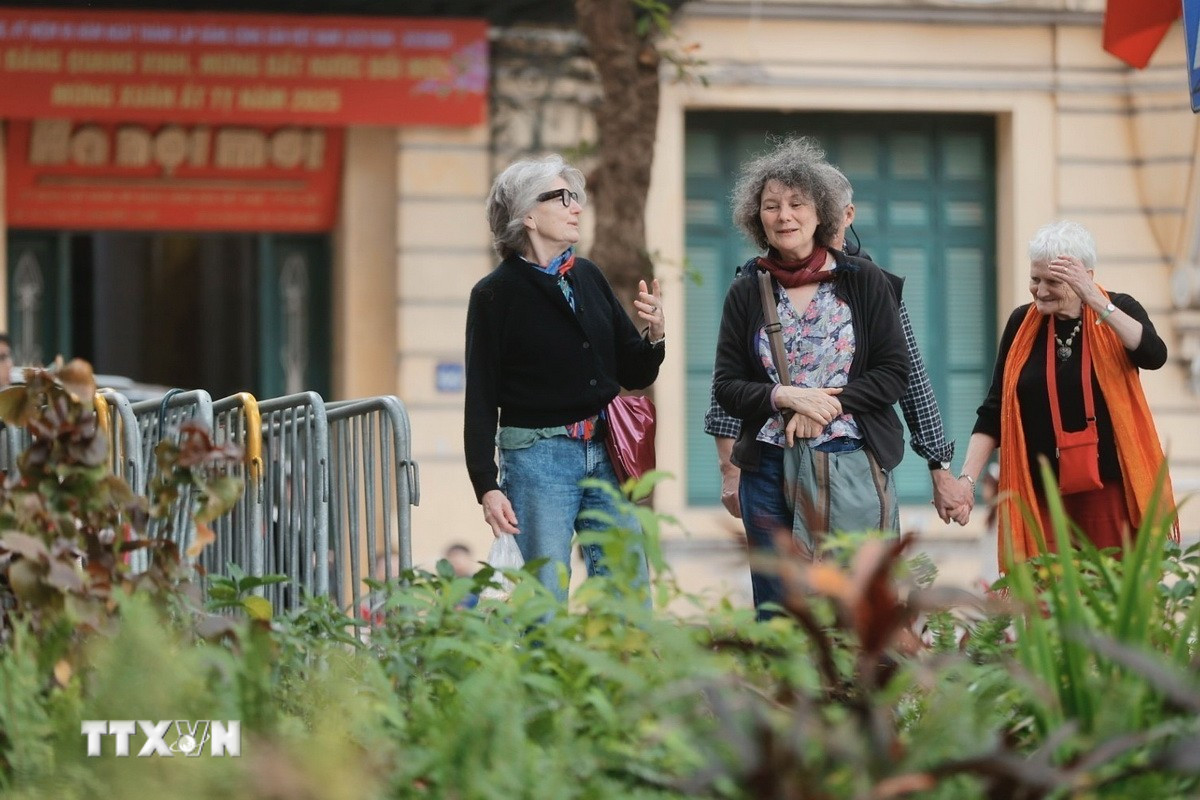
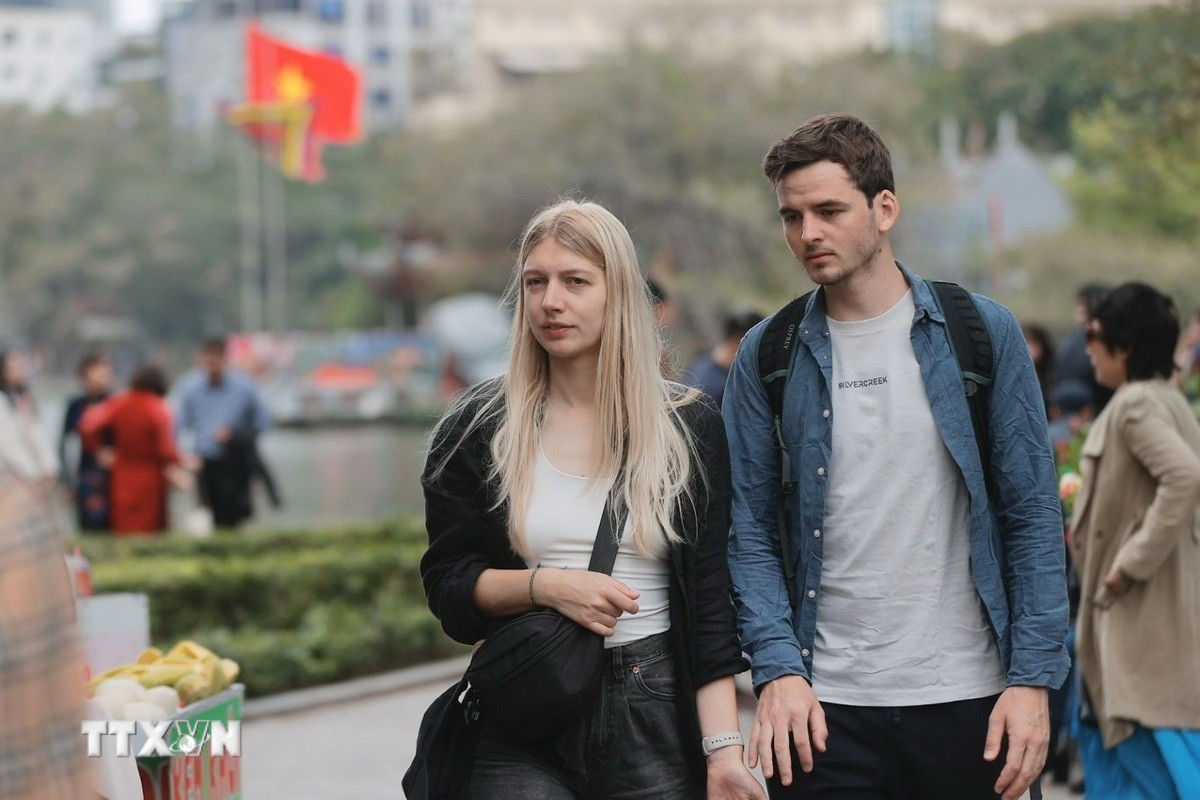
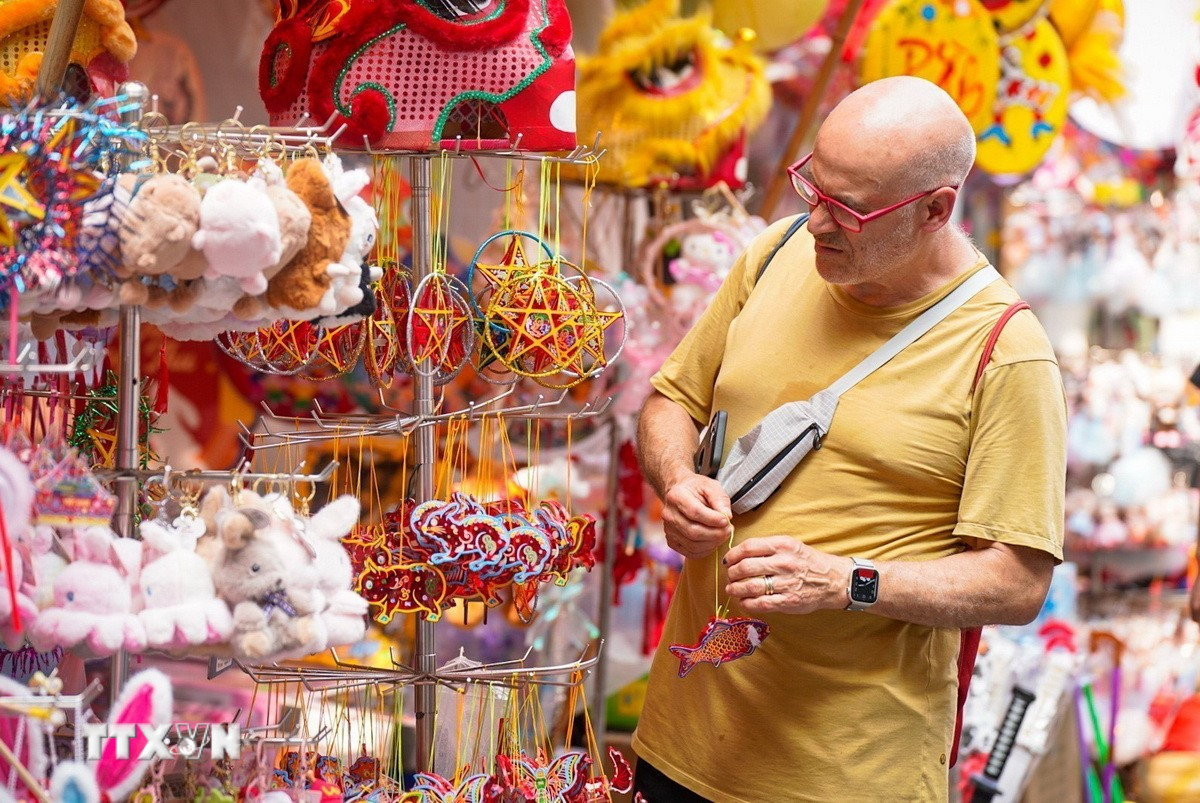
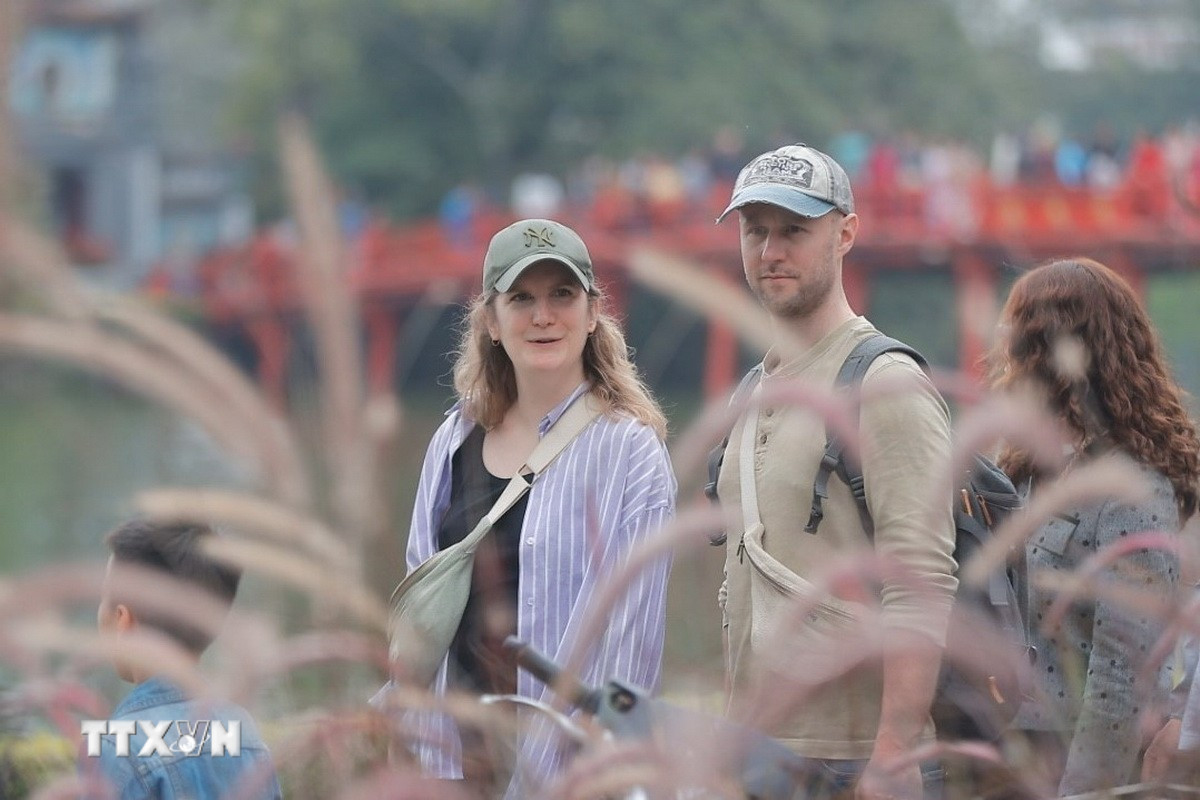
Tourism has become a key economic sector, putting Hanoi in the top 10 cities with the fastest tourism growth rate in the world. In 2024, Hanoi will welcome 27.86 million visitors (up 12.7% compared to 2023), including 6.35 million international visitors (up 34.4%); total revenue from tourists will reach about 110.52 trillion VND, up 18.3% compared to 2023.
The industrial, commercial, and import-export sectors are all growing. Hanoi currently has 9 operating industrial parks, 3 under construction, a modern commercial system with hundreds of centers, supermarkets, wholesale markets, and tens of thousands of retail establishments. Total retail sales of goods and service revenue in 2024 will reach more than 853 trillion VND, an increase of 10.8%.
Comprehensive socio-cultural development
Not only is Hanoi the political and economic center, it is also the largest cultural center of the country. With 5,922 relics, including 13 Special National Monuments and thousands of national relics, Hanoi is a “living museum” of national history.
Heritage sites such as the Imperial Citadel of Thang Long, the Temple of Literature, the One Pillar Pagoda, Hoan Kiem Lake, the Hanoi Flag Tower, etc. have become cultural symbols of the country. Many intangible heritages such as Ca Tru and the Giong Festival have been recognized by UNESCO, elevating the value of Vietnamese culture.
Hanoi is also at the forefront of developing the cultural industry, expanding creative fields such as design, music, fashion, and contemporary art. Being recognized by UNESCO as a “Creative City in the field of design” (in 2019) is an important milestone, affirming the creative identity and integration capacity of the Capital.
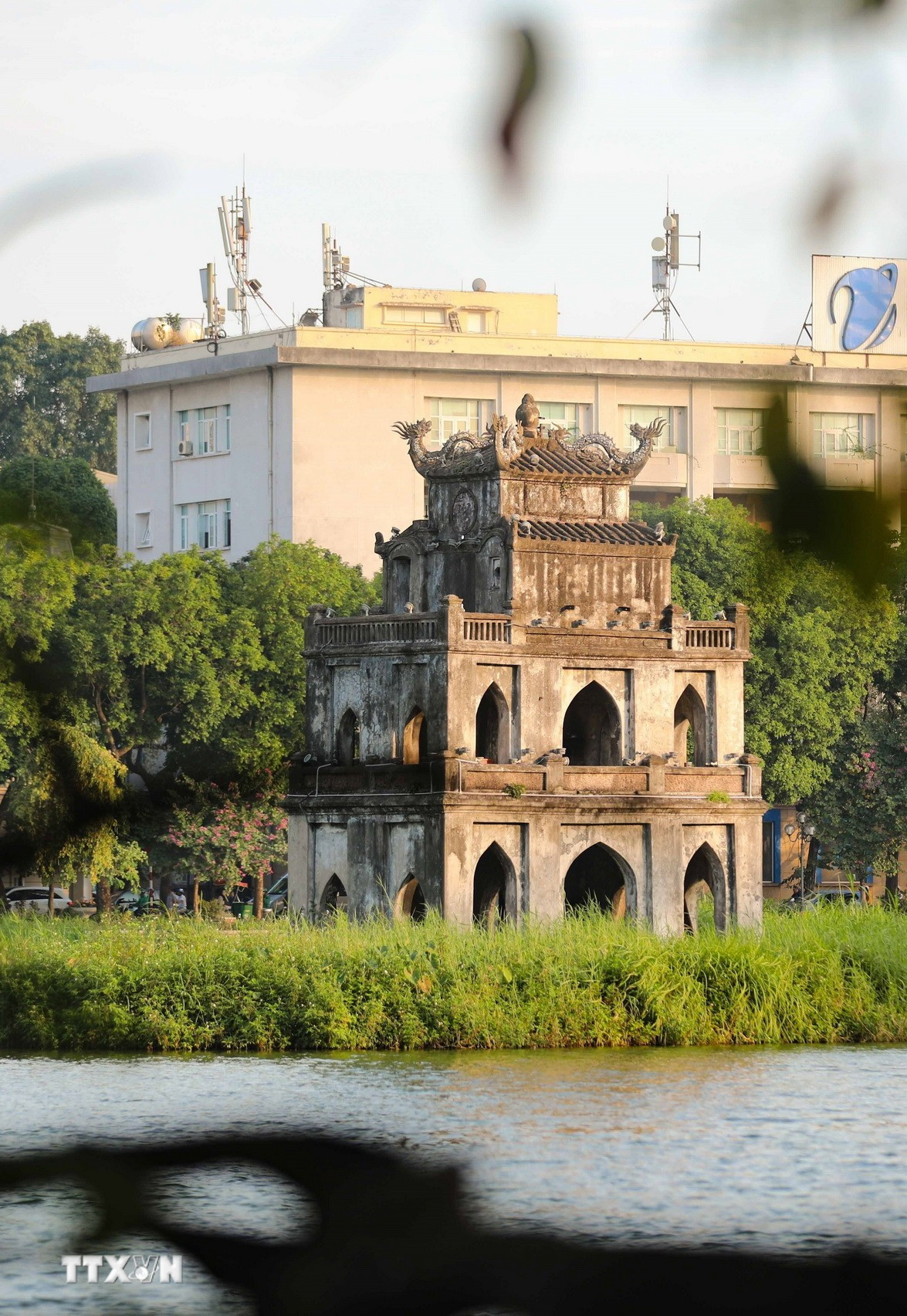
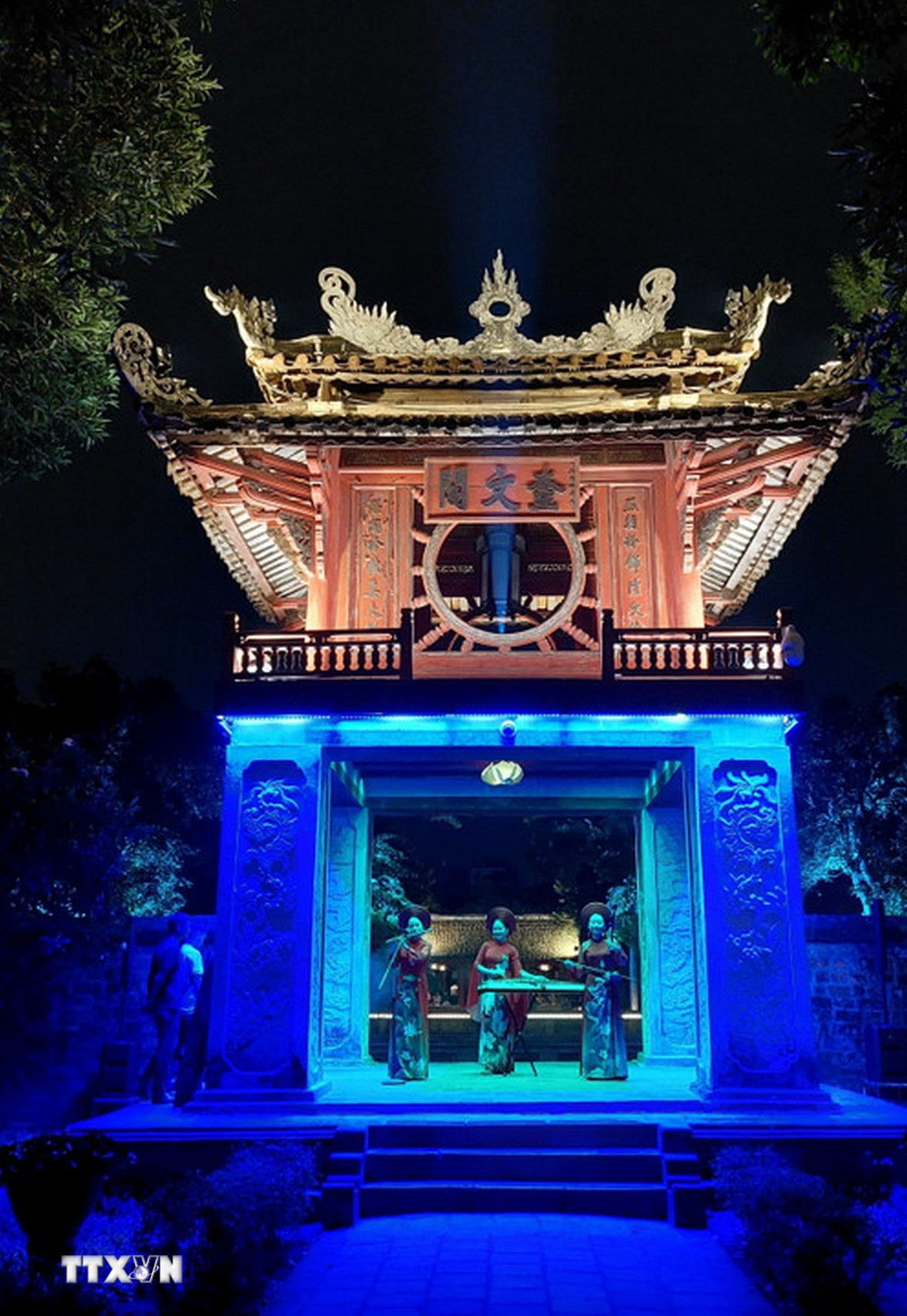
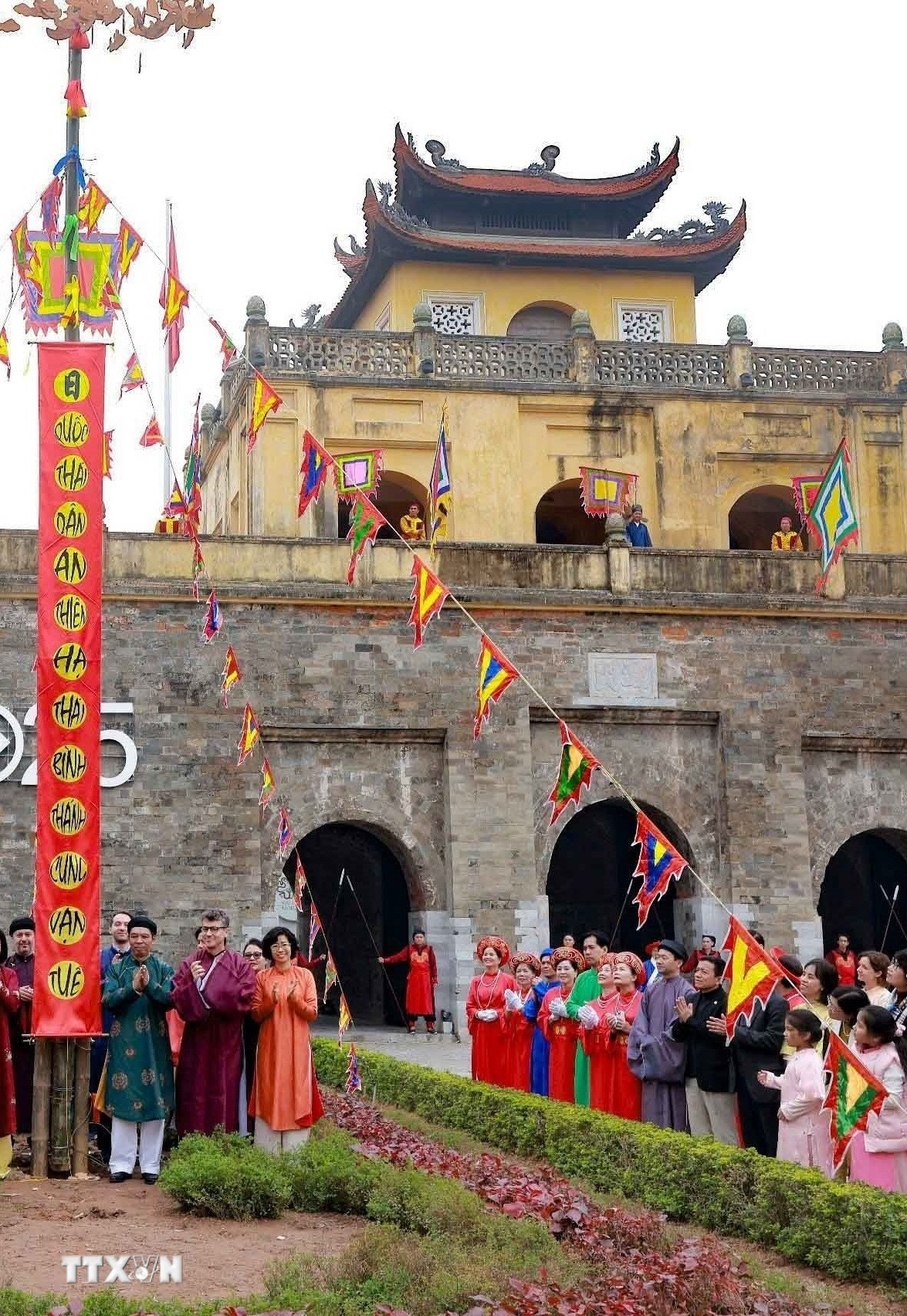
In the field of education, Hanoi continues to lead the country in training quality. In the 2024-2025 school year, Hanoi students won 200 prizes at the national excellent student competition, 14 medals at international competitions; the high school graduation rate reached 99.75%.
The city currently has nearly 3,000 schools and nearly 100 universities and academies - training centers for high-quality human resources in Vietnam.
The capital’s healthcare sector has also made great strides. Hanoi is home to many of the country’s largest and most modern hospitals; it is a pioneer in applying advanced scientific and technological achievements to medical examination and treatment.
Major hospitals have successfully implemented many complex treatment techniques, such as heart surgery, organ transplants, and cancer treatment with radiotherapy and chemotherapy.
Social security work has achieved many outstanding results. By the end of 2024, Hanoi will have no more poor households; near-poor households will decrease to 9,928 households, accounting for 0.43% of the total number of households.
Modernizing infrastructure - building smart cities
Not only focusing on socio-economic development, over the past years, Hanoi has also given great priority to modernizing and upgrading infrastructure.
The appearance of the capital is increasingly becoming brighter, greener, cleaner, more beautiful and civilized, worthy of its position as the political, economic and cultural center of the whole country.
A series of key projects, such as Nhat Tan Bridge, Vo Nguyen Giap Street, Ring Road 2, Ring Road 3, and Cat Linh-Ha Dong railway line were completed, contributing to changing the urban landscape and reducing traffic pressure. The public transport system was also expanded, buses covered the city and connected with 6 neighboring provinces.
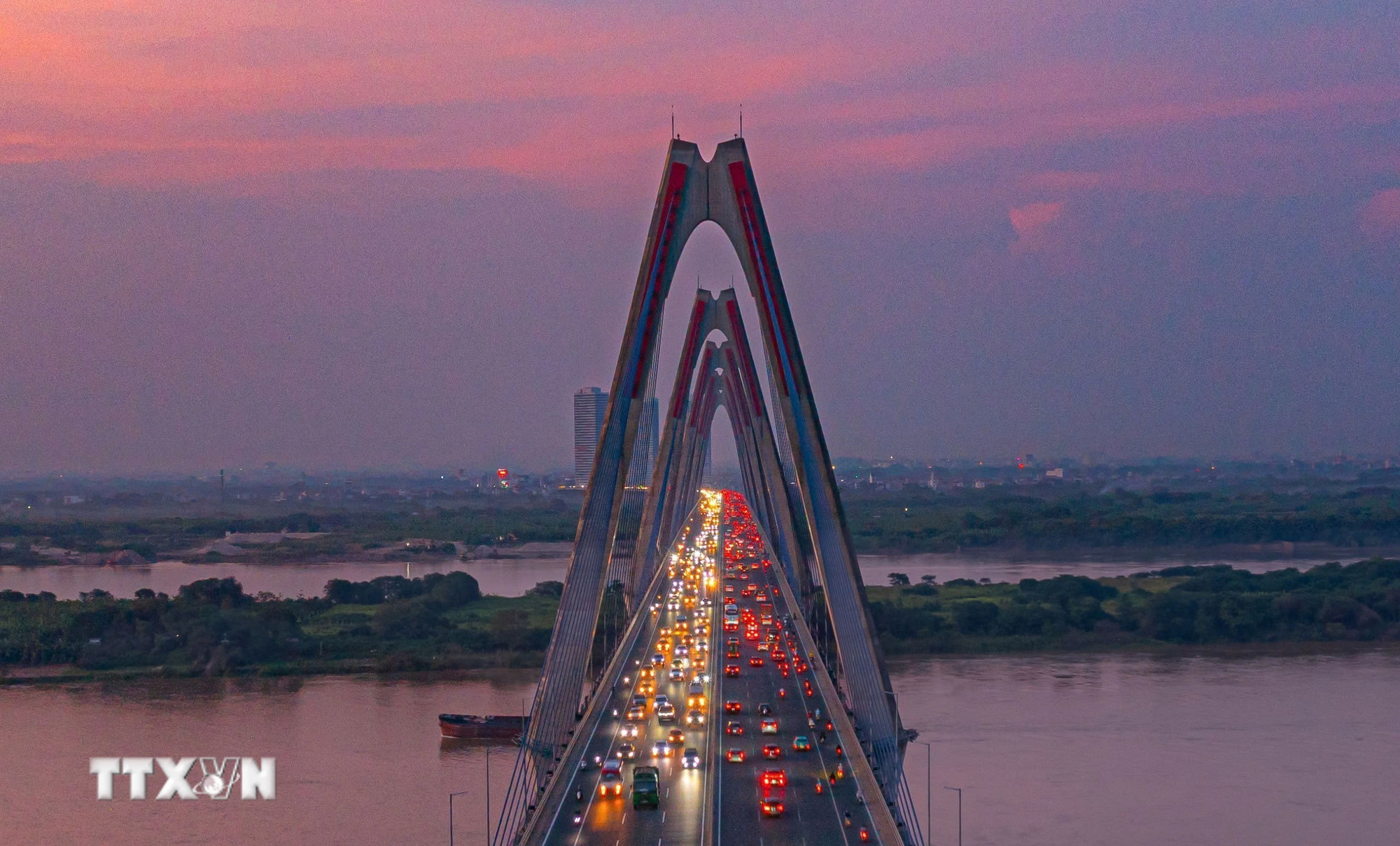
Hanoi focuses on developing social housing, resettlement and renovation of old apartments, aiming to improve people's quality of life. The urban water supply system currently meets the needs of 100% of inner-city residents and 90% of rural residents, striving to reach 100% by the end of 2025.
In addition, the public lighting system has also been expanded with more than 5,300km of lighted roads, making the urban appearance increasingly bright, green, clean and beautiful. Cultural, sports and urban environmental infrastructure have also been invested synchronously, aiming at sustainable development.
In the digital age, Hanoi is emerging as Vietnam’s leading technology hub. The city is boosting investment in digital infrastructure, developing high-tech zones, and encouraging digital transformation in all fields.
By 2030, Hanoi aims to become a smart, modern city, connected to the regional and global smart urban network.
71 years since the Capital Liberation Day, Hanoi is not only a place that preserves the memories of a thousand years of civilization but also a symbol of the nation's mettle, intelligence and aspiration for development.
From a city devastated by war, Hanoi has risen to become a modern, dynamic and deeply integrated urban area with the world. With great achievements in all fields, Hanoi is confidently entering a new stage of development, carrying with it the aspirations of the entire nation in the era of international integration./.
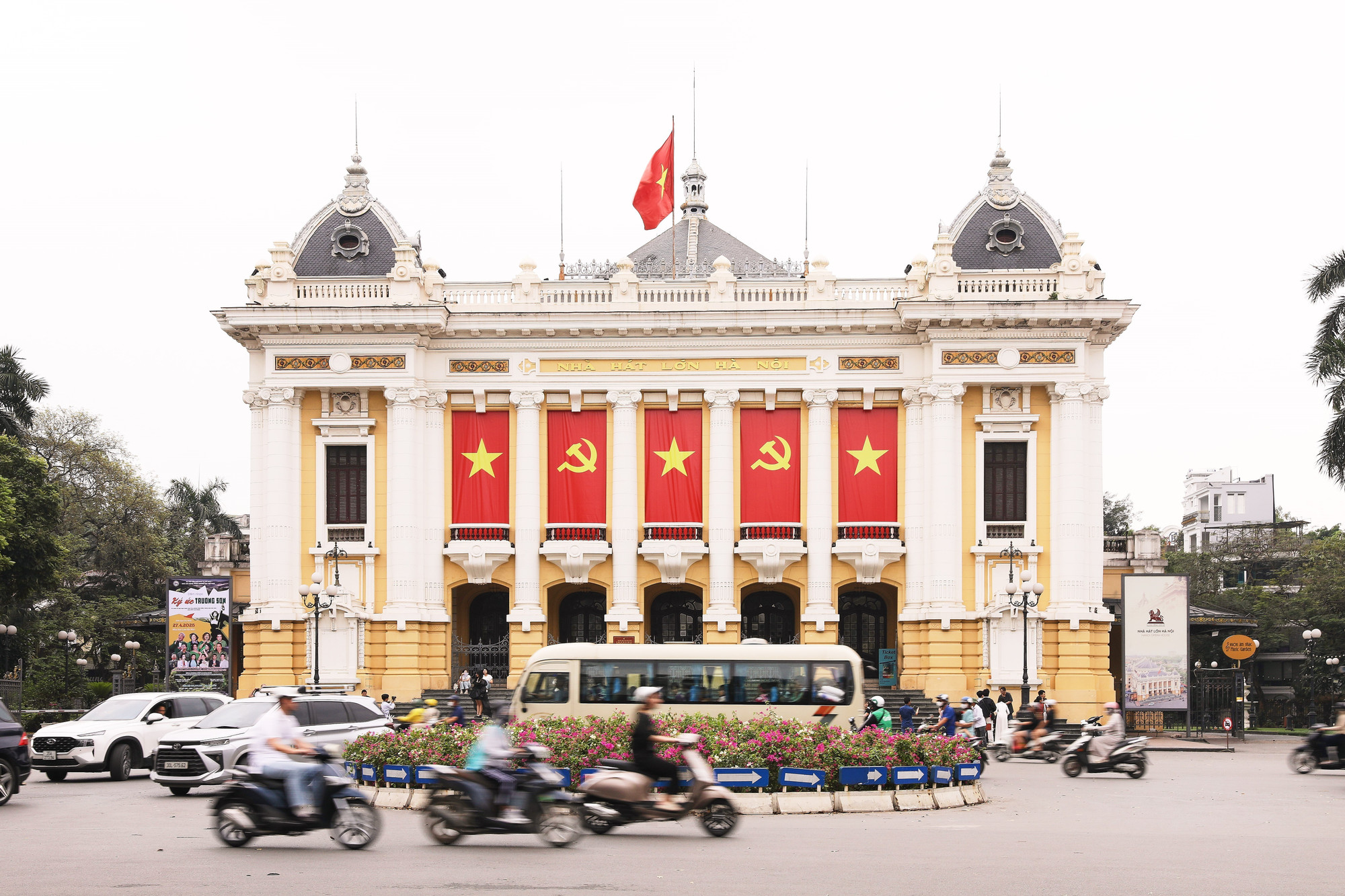
Source: https://www.vietnamplus.vn/ha-noi-tu-ngay-ve-chien-thang-den-khat-vong-phat-trien-ben-vung-va-hoi-nhap-post1068578.vnp





![[Photo] "Exposing letters" in the flood center of Lang Son](https://vphoto.vietnam.vn/thumb/1200x675/vietnam/resource/IMAGE/2025/10/10/1760080117518_ndo_br_z7101324112737-07cd4d1c01801a8ccf4ae0cbaf31c4a3-507-jpg.webp)
![[Photo] Standing member of the Secretariat Tran Cam Tu works with the Standing Committee of the Party Committee of the Ministry of Health](https://vphoto.vietnam.vn/thumb/1200x675/vietnam/resource/IMAGE/2025/10/10/1760079818773_image-4-6972-jpg.webp)
![[Photo] Prime Minister Pham Minh Chinh attends the Patriotic Emulation Congress of Hanoi city](https://vphoto.vietnam.vn/thumb/1200x675/vietnam/resource/IMAGE/2025/10/10/1760078918257_dsc-2008-jpg.webp)



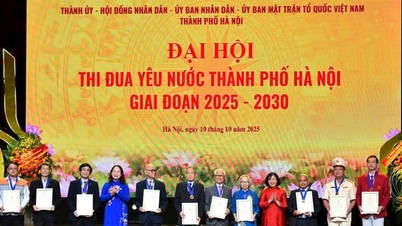
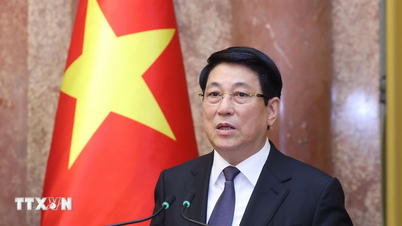




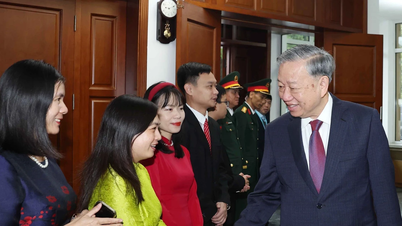

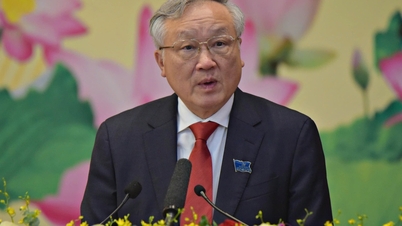



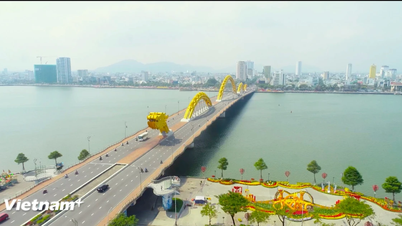
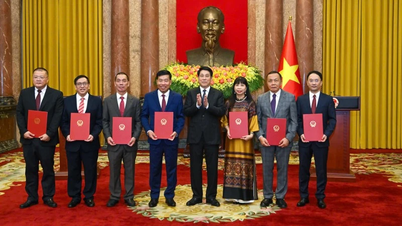











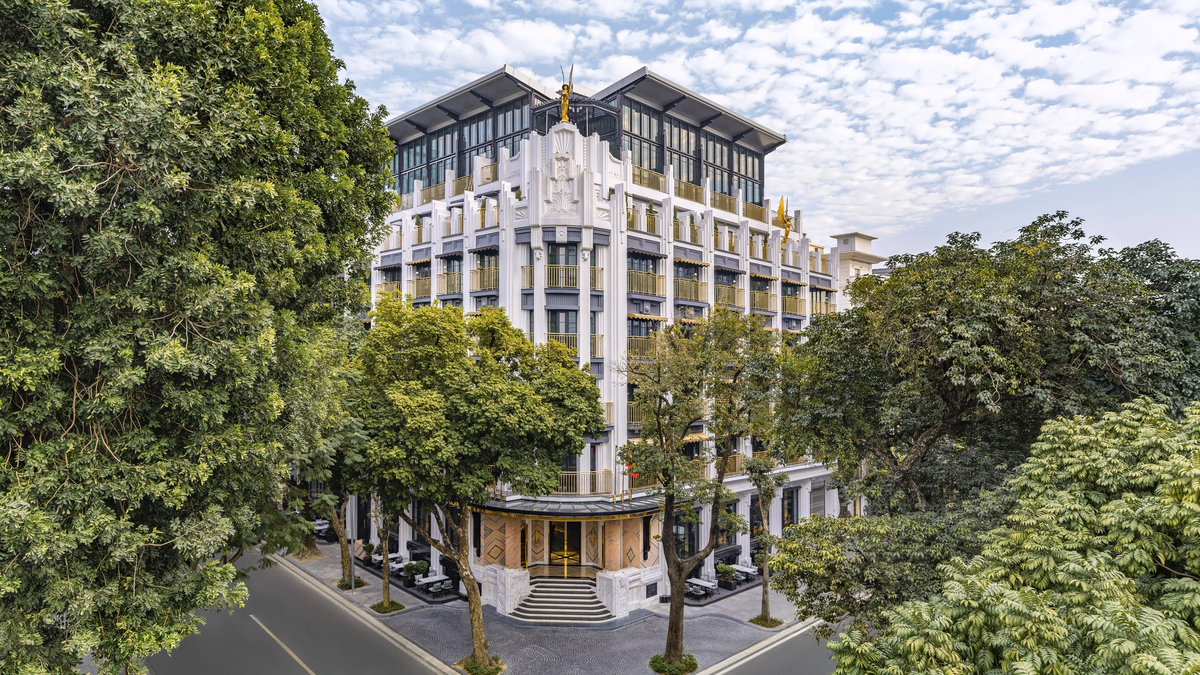





















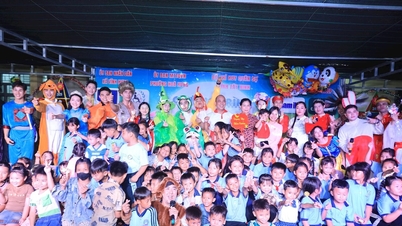







![[Photo] President Luong Cuong presents decisions on conferring titles and appointing Vietnamese Ambassadors](https://vphoto.vietnam.vn/thumb/402x226/vietnam/resource/IMAGE/2025/10/10/1760082105623_image-1.jpeg)
















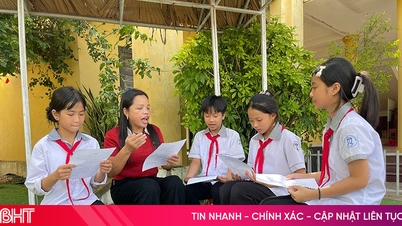



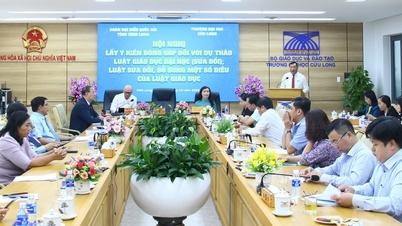

















Comment (0)